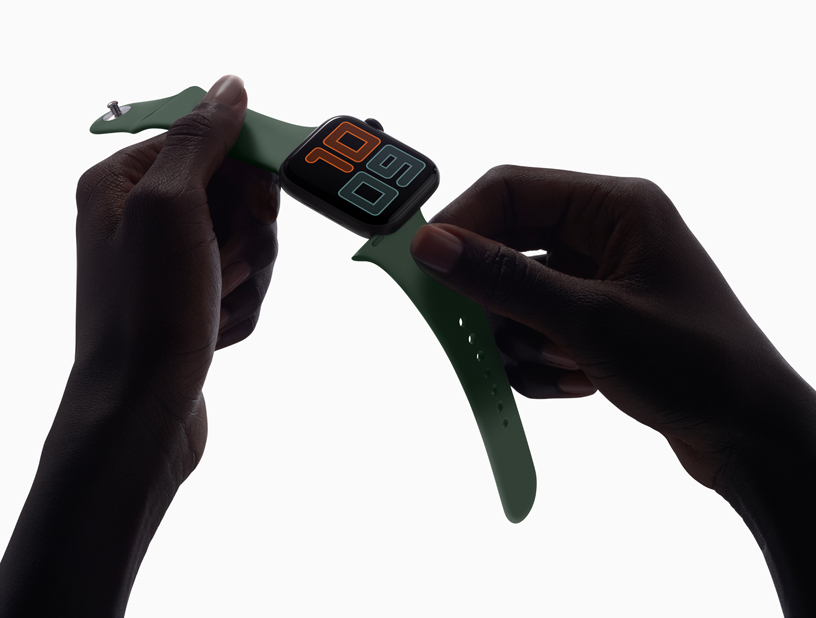There is no bigger industry on our planet than food and agriculture, with a consistent, loyal customer base of 7 billion. In fact, the World Bank estimates that food and agriculture comprise about 10% of the global GDP, meaning that, food and agriculture would be valued at about $8 trillion globally based on the projected global GDP of $88 trillion for 2019.
On the food front, a record $1.71 trillion was spent on food and beverages in 2018 at grocery stores and other retailers and away-from-home meals and snacks in the United States alone. During the same year, 9.7% of Americans’ disposable personal income was spent on food — 5% at home and 4.7% away from home — a percentage that has remained steady amidst economic changes over the past 20 years.
However, despite a stalwart customer base, the food industry is facing unprecedented challenges in production, demand and regulations stemming from consumer trends. Consumer demands and focus have changed in recent years. An increasing focus by consumers on sustainability, health and freshness has placed significant pressure on the food industry to innovate.
Innovation imperative
In recent years, agtech innovators have created exciting new ways to harness the power of technology to enhance the world’s food supply. Agtech innovations are protecting crops and maximizing outputs — enabling structural changes in the agriculture system that could achieve important sustainability goals of lowering greenhouse gasses, reducing water use, ending deforestation and potentially even sequestering carbon back into soil.
But this is just the beginning. As everyone needs to eat (multiple times a day!), there remains a huge opportunity for investments in innovative food and beverage technology, or food tech, that better the health of our food ecosystem through novel ingredients and improved diets via better food distribution, preservation and access.
The opportunity to use technology to improve food is massive and extends to improving food usage and decreasing waste — a key to minimizing the environmental impacts of a growing human population. Cognizant of this huge opportunity, venture capitalists are closely tracking this space. According to PitchBook, funding for food tech has skyrocketed from about $60 million in 2008 to more than $1 billion in 2015. And unique investments from VCs and private equity funds have doubled from 223 in 2015 to 459 in 2017, according to CB Insights. In examining total investments made, along with exit activity, food tech has now surpassed agtech on both fronts. This is still relatively small, given the food tech sector’s large potential customer base globally of more than 7 billion people (and growing).
Key drivers of food tech investments
Consumers are getting pickier about what they eat. They are juggling hectic work and personal lives, and demand convenience when it comes to their meals. But this convenience cannot come at the expense of quality. Now more than ever, people want to know what’s in their food, where it came from and how its production and sourcing impacts the environment.
An increasing focus by consumers on sustainability, health and freshness has placed significant pressure on the food industry to innovate.
In years past, consumer packaged goods (CPG) incumbents rushed to deliver on these heightened demands — promising convenient, superior-quality food. But falling margins on commodity ingredients, coupled with industry consolidation, have discouraged these efforts, and many have refocused their attention — leaving the door open for a new wave of hungry (pun intended) innovators and startups.
Today’s consumers are not only looking for convenience and consistency, but are also seeking nutritious food that can be accessed with ease, limits waste creation and aligns with their personal brands. In reality, it has never been more difficult to be a food company. Consumer demands have expanded to include ethical mantras but have not given way to requirements of convenience. However, spending trends show that consumers are ready and willing to pay a premium for food tech innovations that can meet their ever-increasing needs of convenience, health and low environmental impact. The opportunity for food innovators to capitalize on these market demands is growing!
Food tech present
Today, grocery ordering and delivery represents the largest food tech category, while meal ordering comprises the greatest number of privately held, venture-backed startups in food tech globally. Last year was an exceptional year for food tech, with a record-breaking $16.9 billion in funding recorded. According to Crunchbase, the three biggest deals of the year included $1 billion for Swiggy, India’s leading online restaurant marketplace; $600 million for Instacart, a U.S. grocery delivery service; and $590 million for iFood, a Brazil-based restaurant marketplace.
While consumers still have an appetite (again with the puns!) for grocery ordering and delivery plays, investors are becoming increasingly cautious in the wake of meal kit service Blue Apron’s high-profile failure (among others), which emphasized challenges like scalability, the inability to patent food and spoilage and contamination concerns across the supply chain. These missteps have led many investors to turn their attention to new food tech frontiers.
Food tech future
There are three key areas in which food tech innovations are beginning to deliver completely new and novel approaches along the value chain. These areas represent technological approaches addressing serious pain points within the food industry, and we anticipate that these sectors will experience significant growth and investment attention in the coming years.
Consumer food tech
Consumer food tech is the segment within food technology investment that focuses on development of technologies primarily marketed toward the consumer. Be it plant-based meats, novel distribution systems or nutrition-based tech, this segment aims to assuage consumer-driven demands. Examples of consumer food tech innovators include alternative protein/diary, nutrition and meal kit distribution companies.
As the organic food trend reached its peak and began to commoditize, another food trend has risen to take its place. Plant-based, meatless, animal-free … regardless of the moniker given, it seems like everyone is getting into the meatless craze. News or ads trumpeting the arrival of “meatless meat” are unavoidable.
Fast food giants Burger King (via Impossible Foods) and McDonald’s (via Beyond Meat) are now serving meatless burgers on their menus, attracting new customers that typically shop for food at Trader Joe’s or Whole Foods. Memphis Meats is another example, as is the retail giant Ikea, which is working on a vegetarian version of its infamous Swedish meatballs.
But it doesn’t end there. Other innovative companies are working on the commercialization of alternative proteins such as Clara Foods (egg whites from cell cultures), and Ripple Foods and Oatly that are focused on developing dairy and nut-free milk alternatives. UBS estimates that the market for plant-based proteins alone could expand from just under $5 billion at present to some $85 billion over the next decade, at a roughly 28% growth rate year-over-year.
Meanwhile, companies like Brightseed, Just and Renaissance Bioscience are blazing new trails on the biological and nutraceuticals front, seeking ways to produce food and nutritional supplements in cleaner, smarter and more sustainable ways.
Industrial food tech
While some companies focus on the food itself, many others are exploring how to process, package and distribute this new wave of sustainable, healthy and innovative food. Industrial food tech is the sub-segment of food tech that focuses on addressing fundamental business model and B2B pain points within the food industry. The companies include innovators in novel processing and packaging technology and new/functional ingredients that have improved nutritional, labeling or formulation characteristics.
Investments in food tech will continue to increase to help deliver on the promise of healthier, more sustainable food systems.
Food preservation technology companies like Apeel Sciences and Hazel Technologies are leading the way in reducing food waste, while improving produce quality during transportation. This is a massive issue ripe for innovation, as pre-consumer food waste comprises 40% of all food wasted in the U.S. Improved food-waste profiles could enable an overall reduction in required arable land.
Food processing/grading technologies will also be at the forefront of this segment; for example, food inspection startup P&P Optica has received financing to develop their food quality and foreign object detection technology. This hyperspectral tech has the potential to provide not only food-safety improvements in automated foreign object detection, but also to enable meat quality grading to be standardized and improved over time.
Coupled with a burgeoning sector in industrial ingredients like emulsifiers, sweeteners and firming agents, among other additives, this segment is growing quickly as large-scale food producers are facing consumer pressure to not only innovate, but also to do so sustainably. Companies like Aromyx are working to quantify things like taste and smell to help enhance production processes across a range of industries, from pharmaceuticals and chemicals to agriculture, food and beverages and consumer packaged goods.
Supply chain & procurement
The Chipotle contamination crisis (and others like it) underscores the importance of improving visibility into food supply chains. Safe Traces and other startups are helping to increasing food traceability by commercializing new modes of tracking food provenance. Consumer awareness regarding food fraud and requirements for food traceability, as well as records of provenance, are increasing. This has created a strong business case for innovation in the food supply chain to satisfy these demands. Changing consumer preferences for quality, convenience and gourmet products in food service has led to a rise in the category of fast-casual restaurants and placed pressure on fast food restaurants to rethink their delivery models.
Startups like Farmer’s Fridge (a Finistere portfolio company) and BingoBox package chef-curated meals and snacks in conveniently placed vending machines or unmanned, automated convenience stores. 6D Bytes uses AI and machine learning to prepare healthy food, like smoothies, while Starship Electronics has, in partnership with local stores and restaurants, introduced a fleet of robots that deliver food to people.
Innovators in this segment are focused on traceability, sustainability, improving freshness and eliminating food waste. For example, Good Eggs and Farmdrop deliver fresh and sustainably sourced grocery food in reusable packaging, while Full Harvest encourages the food supply chain to “shop ugly” by using imperfect or surplus produce that would have otherwise gone to waste.
Technology will continue to play an increasingly critical role in how the food we eat is produced, how it is packaged, how it is delivered, how it tastes, feels and smells and how it is reused and repurposed. Investments in food tech will continue to increase to help deliver on the promise of healthier, more sustainable food systems for the world. After all, we are what we eat.



